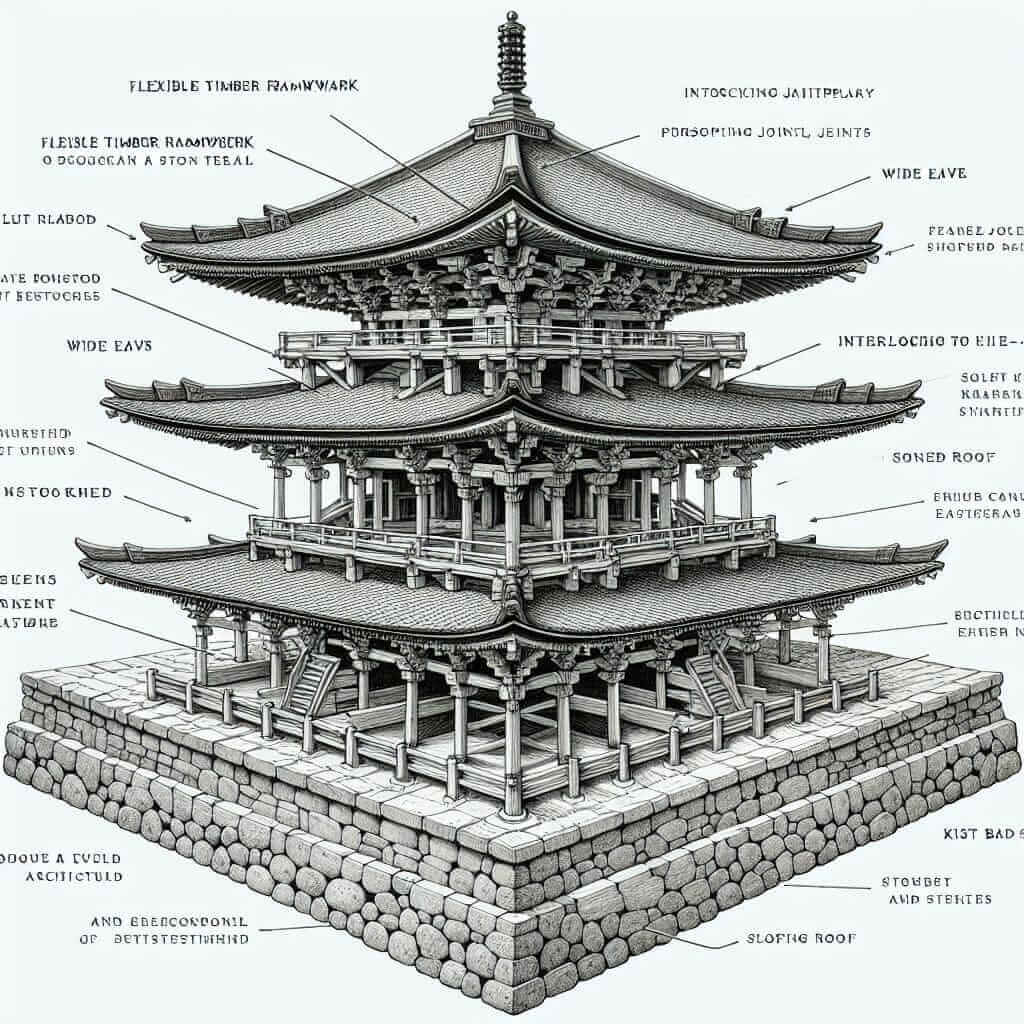As an IELTS instructor with over two decades of experience, I often encounter students perplexed by the diverse range of topics covered in the IELTS Reading test. One such topic that frequently arises is the architectural marvel of pagodas, specifically their resilience against the elements. This article delves into the reasons why pagodas don’t fall down, offering insights into both the architectural principles and the potential IELTS Reading passages you might encounter.
Understanding the Significance of Architectural Passages in IELTS
Before we deconstruct the mystery of pagodas, let’s understand why the IELTS exam includes passages about architecture. The IELTS Reading test assesses your ability to comprehend complex texts on a variety of subjects. Architecture, with its blend of history, culture, and scientific principles, presents a rich tapestry for examiners to evaluate your reading comprehension, vocabulary, and analytical skills.
Deconstructing the Resilience of Pagodas
The question “Why don’t pagodas fall down?” often appears in IELTS Reading materials, prompting a deeper look into their structural ingenuity. These towering structures, common in East Asian countries, withstand centuries of harsh weather conditions, including earthquakes and typhoons, due to several factors:
1. Flexible Timber Framework:
Unlike Western structures that rely on rigid materials, pagodas utilize a flexible timber framework. This design allows the pagoda to sway during earthquakes and high winds, dissipating the energy rather than resisting it directly.
2. Interlocking System:
The wooden components of a pagoda are ingeniously designed with interlocking joints, often without nails or glue. These joints allow for movement and flexibility, preventing the structure from being ripped apart by external forces.
3. Wide Eaves and Sloping Roofs:
The distinctive wide eaves and sloping roofs of pagodas serve a functional purpose. They distribute weight evenly, provide shade, and channel rainwater away from the building’s foundation, preventing erosion and water damage.
4. Stone Base:
Pagodas are typically built on a solid stone base, which elevates the structure from the ground, providing stability and protection against flooding.

Encountering Pagodas in IELTS Reading
Now, how might this information manifest in an IELTS Reading passage? You might encounter:
- A descriptive text: Detailing the history, architectural features, and cultural significance of pagodas.
- A comparative passage: Contrasting the construction techniques of pagodas with other architectural styles.
- A problem-solution format: Highlighting the challenges of building tall structures in earthquake-prone regions and presenting pagodas as a solution.
Tips for Tackling Architectural Passages
- Focus on Key Terms: Pay close attention to architectural terms (e.g., eaves, beams, foundations) and their definitions within the passage.
- Visualize the Structure: Try to create a mental image of the pagoda and its components as you read, which will aid in understanding the interplay of different elements.
- Skim for Specific Information: IELTS Reading questions often require you to locate specific details within the text. Practice skimming and scanning techniques to quickly find the information you need.
- Practice Makes Perfect: Familiarize yourself with a variety of architectural texts and IELTS Reading question types to build your confidence.
Conclusion
Mastering the art of IELTS Reading involves not just language proficiency but also an understanding of how information is presented across diverse topics. By exploring the intriguing world of pagodas, you not only gain architectural knowledge but also enhance your ability to decode complex texts, a skill crucial for success in the IELTS exam and beyond.